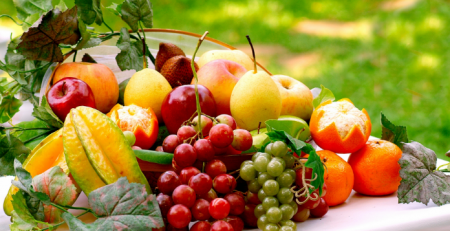Uric Acid, Gout And Kidney Stones!
Raised Levels Of Blood Uric Acid, Gout And Kidney Stones!
Many people suffer from raised levels of uric acids in their blood.
Often this condition is found in routine renal function tests.
Most often this condition is ignored if the rise is borderline.
But left untreated, long term rise in uric acid could cause chronic illnesses like gout and renal stones and kidney and heart disease.
What exactly are these diseases?
***
Certain foods that we eat contain chemicals called purines.
Uric acid is formed when purines are broken down by our body.
Uric acid dissolves in blood and it is transported to the kidneys and they excrete it out of our body in urine, maintaining the blood uric acid levels normal (3.5 to 7.2 mg / dL).
If the blood uric acid levels rise above 7.2 mg / dL, the condition is called hyperuricemia.
If excess uric acid is accumulated in our body, it may get deposited in our joints in the form of uric acid crystals causing a very painful form of arthritis called gout.
They may also settle in the kidneys forming kidney stones.
If the condition is not treated it can cause permanent bone, joint, tissue and kidney damage and can also lead to heart disease.
Researchers have also found links between hyperuricemia and high blood pressure, type 2 diabetes and fatty liver.
***
Foods high in purines are:
Sea food like salmon and sardines and shell fish shrimps (prawns) and lobsters.
Red meat.
Organ meats like liver.
Sugar sweetened foods like sweetened cereals, bakery products, candies.
Alcohol, especially beers and distilled liquors and also non alcoholic beers.
Certain vegetables like spinach, asparagus.
***
Signs and symptoms of gout:
When the blood uric acid levels remain high for long time sharp needle like crystals of uric acid or urate crystals get deposited in some joints and tissues around the joints.
This causes the joints to become hot, red, swollen and tender. The pain is severe and comes on quickly and peaks in less than twelve to twenty four hours.
The joint at the base of the big toe is affected in half the cases, but the heal, knee, wrists, finger joints too can be affected.
Such attacks can recur frequently, unless treated.
Some people may also develop hard, painless deposits of uric acid crystals called tophi. These too can cause bone damage and arthritis.
Gout appears to affect elderly males more often. It is also associated with metabolic syndrome, presence of abdominal obesity, hypertension, insulin resistance and abnormal lipid profile including high triglyceride levels. So people with hypertension and diabetes are also at a greater risk of developing it.
Gout affects habitual beer drinkers and those who drink a lot of sweetened drinks. It also affects people who habitually consume purine rich foods like some fishes including shell fish like prawns and lobsters and red meats.
Some vegetables like cauliflower, asparagus, spinach, mushrooms, green peas and chickpeas (chana in Marathi) and fava beans (wal papadi in Marathi) and some dried beans too have high levels of purines.
But the plant purines have not been found to cause gout attacks as much as the animal purines.
And some individuals report different vegetables triggering gout attacks in them, including some vegetables not high in purines, e.g. tomatoes.
It probably means some factors other than purines may have a role to play in these attacks.
So such people might want to avoid foods those trigger gout attacks in them, irrespective of their purine content.
Dietary precautions may reduce the recurrence or the severity of gout attacks, but they cannot replace medication to control hyperuricemia and the attacks of gout or prevent further joint damage due to hyperuricemia.
In short, medications lowering blood uric acid levels are essential even if you watch your food and avoid foods those trigger gout attacks.
***
Diagnosis of gout:
Presence of hyperuricemia is not the same as gout.
Gout is diagnosed if uric acid crystals are found in the fluid drawn from the swollen joints or by special imaging diagnostic procedures like ultrasound, X Ray and CAT scan.
***
Treatment of hyperuricemia and gout:
Avoid red meat, organ meat and alcohol, especially beers.
Avoid the sugar sweetened foods viz. sweetened cereals, bakery products, candies
Sea food includes healthy proteins and healthy fats including the omega 3 fatty acids.
The health benefits of sea food on general and heart health outweighs the risk of hyperuricemia.
So you can have sea food in moderation.
Consuming vegetables like spinach and asparagus have not been seen to cause hyperuricemia. So they needn’t be excluded from your food.
Eat well balanced, wholesome food and exercise regularly to lose weight, if you are overweight.
Drink ample water to help the kidneys to excrete uric acid build up in the blood and the kidneys.
Taking Vitamin C may help.
Dietary exclusion of high purine foods will not be sufficient to lower blood uric acid levels or to prevent the gout attacks.
Your doctor will prescribe specific drugs to lower your blood uric acid levels.
Your doctor will also prescribe anti inflammatory medications (NSAIDs) to reduce the pain and duration of the attack.
Kidney stones may get get flushed out in urine.
They may require surgical intervention if they don’t get flushed out.
Also read ‘Basics Of Nutrition’ and ‘Simple Steps To Slimming’ on this website.

















Leave a Reply